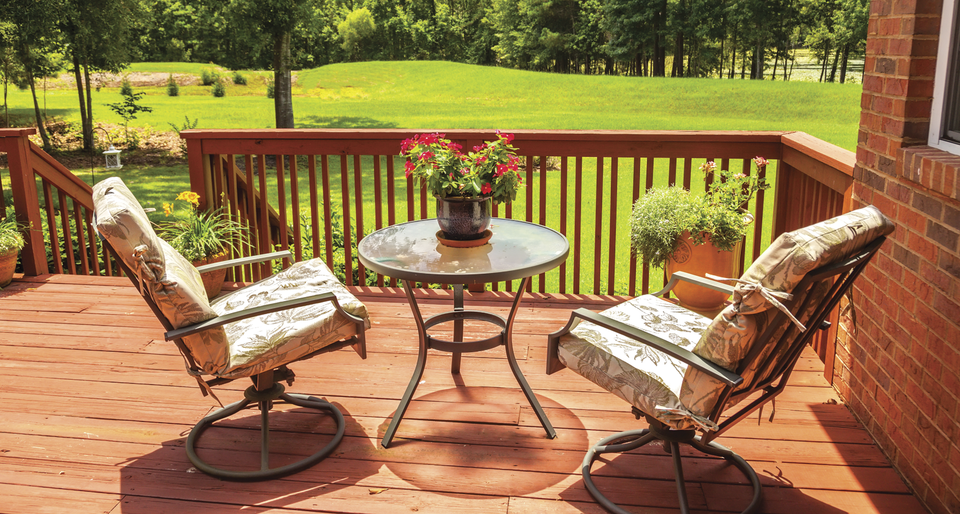A-Z Roofing & Contracting can certain factors can help determine
if a deck is more suitable than a patio:
Capacity: How much weight will the deck need to hold? A deck can be beefed up to hold a huge spa but might sacrifice the aesthetic the homeowner wants.
Climate: Will the deck become too hot to walk on? Will snow and rain runoff create a problem on a solid patio surface?
Site: Rough, sloping terrain almost always dictates a deck. Is a homeowner willing to pay for the extra excavation to provide a patio surface? Beyond building codes, terrain and engineering issues, there are issues with each individual material of which clients should be made aware.
Composite and vinyl decking: These materials require less maintenance than wood and are more resistant to insects, warping, and splintering. Although many of these materials don't shrink or swell, some can swell in hot and sunny climates. This can be much more expensive than wood, especially if coordinating railing and balustrade systems are used.
Wood decking: The low cost, availability and rot resistance makes pressure-treated pine and fir popular decking choices. Even with the periodic maintenance that is absolutely necessary, though, warping, twisting, shrinking and swelling will still occur. Other species such as red cedar, redwood, and tropical hardwoods are more durable and have no chemical treatments, but maintenance is still required and those options can be pricey.
Pavers: Brick, stone and concrete pavers are available in a range of styles and colors and are extremely durable. Very little maintenance is required from the homeowner, but builders should convey that significant site preparation may be needed to ensure proper placement, grade, and drainage.
Concrete: No longer just a drab gray slab, concrete is available in a wide variety of colors and patterns. Designs are nearly limitless. A periodic resealing may be required, but otherwise, an occasional pressure wash is the only maintenance required.


